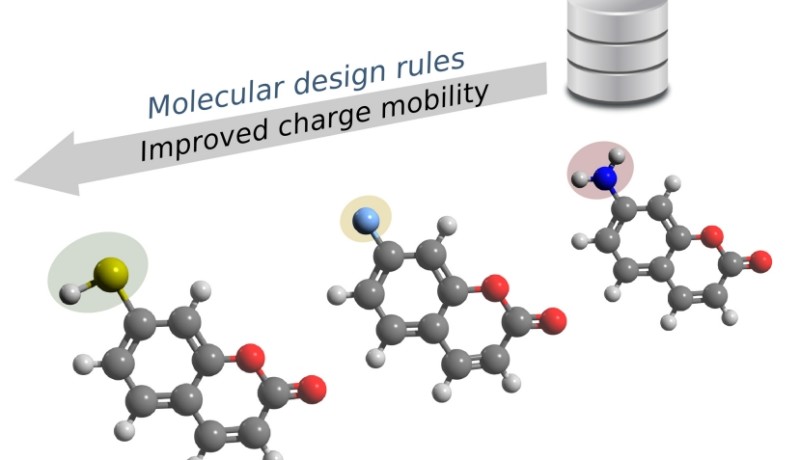Molecular Lego
February 26, 2019
on
on

The production of ‘traditional’ solar cells from silicon requires much energy. Furthermore, the resulting solar cells are rigid and brittle. In contrast, organic semiconductor materials are flexible and light. They would therefore make a promising alternative, if only their efficiency and longevity could be improved.
Under the leadership of professor Karsten Reuter, a team of researchers from the Technical University Munich (TUM) is searching for new materials, not only for photovoltaic applications, but also for displays and LEDs. The research is directed at organic compounds built in a ‘skeleton’ of carbon.
By using clever algorithms, very specific physical parameters can be searched for, such as the coupling parameter (a measure for the speed with which electrons move from one molecule to the next) or the reorganisation energy (which indicates how easy or difficult it is for a molecule to adapt its structure after a charge transfer).
The clusters show which skeletons and which functional groups facilitate a favourable charge transport, and therefore are especially suitable for the development of electronic components. Not only can the properties of a molecule be predicted in this way, but new compounds can also be designed.
More information about organic semiconductors can be found here.
Source: Technical University Munich
Under the leadership of professor Karsten Reuter, a team of researchers from the Technical University Munich (TUM) is searching for new materials, not only for photovoltaic applications, but also for displays and LEDs. The research is directed at organic compounds built in a ‘skeleton’ of carbon.
Screening
Depending on the structure and composition, these molecules and the materials made from them have different physical characteristics – a plethora of candidates for the electronics of the future. There is, however, a problem in tracking down these candidates: it takes weeks or months to fabricate a new material in the lab, test it and optimise it. With Computational Screening this process can be accelerated considerably.Computer instead of test tube
The researchers analysed existing databases using a powerful computer. This virtual quest for relationships and patterns is called data mining. With this, knowing what you are looking for is decisive: in this case that is electrical conductivity. A high conductivity in a solar cell, for example, means that a lot of current flows when molecules are excited by sunlight.By using clever algorithms, very specific physical parameters can be searched for, such as the coupling parameter (a measure for the speed with which electrons move from one molecule to the next) or the reorganisation energy (which indicates how easy or difficult it is for a molecule to adapt its structure after a charge transfer).
Clusters
Using this technique, the research team has analysed the structural data of 64000 organic mono-crystals and grouped into clusters. The result: both the carbon skeleton of the molecules as well as the functional groups that ‘cling’ to them, influence the conductivity significantly.The clusters show which skeletons and which functional groups facilitate a favourable charge transport, and therefore are especially suitable for the development of electronic components. Not only can the properties of a molecule be predicted in this way, but new compounds can also be designed.
More information about organic semiconductors can be found here.
Source: Technical University Munich
Read full article
Hide full article



Discussion (2 comments)
luchenbe 6 years ago
TheEditor 6 years ago